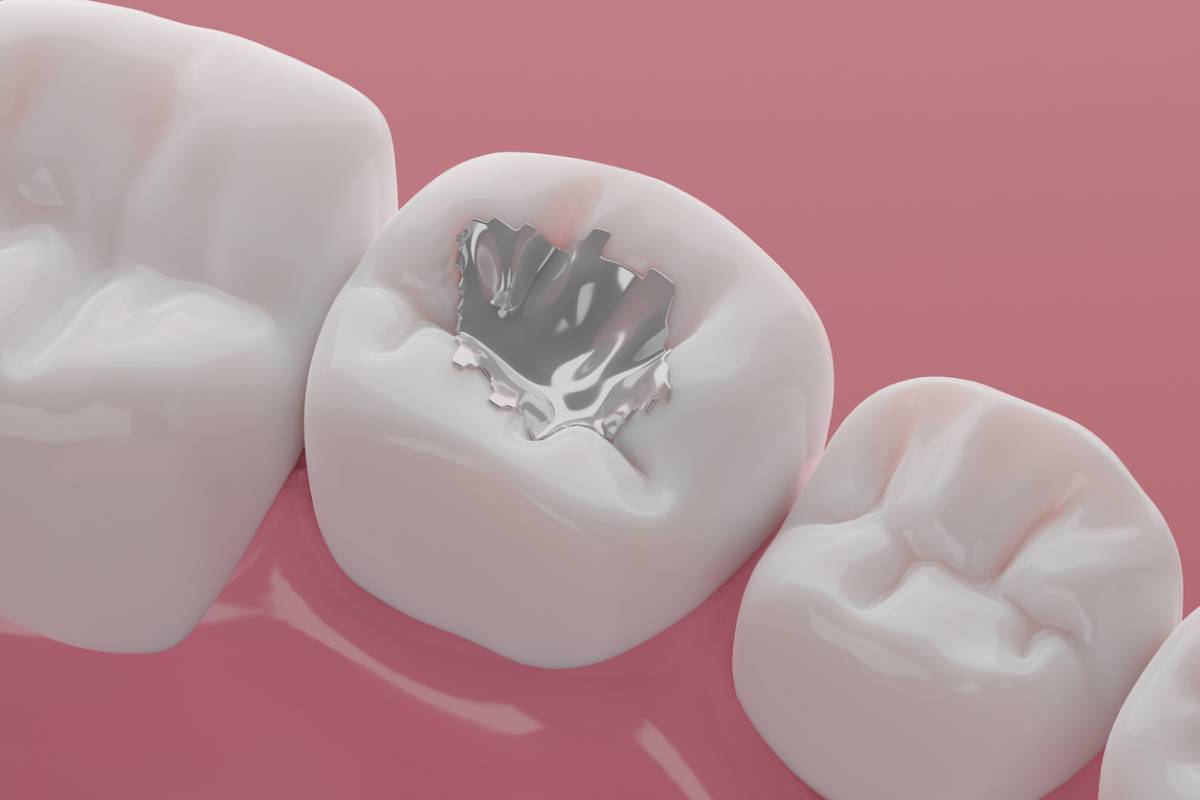A dental filling is one of the most commonly performed procedures at any dental office. Most of us will have at least one dental filling in our lifetime. Still, if you have not had a dental filling before, you may want to know: Are dental fillings painful? In this article, we answer this question and discuss the procedure in detail to help you better prepare for it.
Are Dental Fillings Painful?
Modern dental filling procedures are typically not painful or uncomfortable for patients because they use local anesthetics. Although the injection of the anesthetic can be slightly unpleasant, it does not cause significant pain for most patients.
In a couple of minutes after the injection of the local anesthetic, the area of the procedure will become completely numb, and you will not feel anything during the procedure. Modern local anesthetics are highly effective and can sufficiently block the pain even for such dental surgeries as tooth extraction. On top of that, your dentist can adjust the dose of the anesthetic if it is required.
Sedation Dentistry
Even though a dental filling procedure is typically one of the most comfortable dental procedures for patients, some might need additional measures to go through with it. Some patients have a high tolerance or allergic reaction to the local anesthetic. In these cases, your dentist might recommend sedation dentistry options. Sedation can also be beneficial to patients with acute dental anxiety or those who find it challenging to remain in one position for a prolonged period.
Sedation dentistry options include:
Nitrous oxide
Nitrous oxide, also known as laughing gas, is a mild sedation method that can help patients relax and feel calm during the procedure. This sedation option does not make you fall asleep or forget the procedure, and it typically does not require any downtime afterward. Because nitrous oxide does not block pain, it is typically used in combination with a local anesthetic.
Oral Conscious Sedation
Oral conscious sedation refers to a pill taken approximately an hour before a dental procedure. It makes you feel relaxed and even sleepy, but you can still communicate with your doctor and respond to instructions. After the procedure, you will need a couple of hours of rest before the effects of sedation wear off completely.
IV Sedation
IV sedation is delivered to the bloodstream via an injection into a vein of a patient. It is the deepest but still conscious option of sedation. IV sedation can make a patient fall asleep and have little memory of the procedure.
General Anesthesia
General anesthesia is a more serious type of sedation than the ones we discussed above. This method makes the patient fall asleep, and as a result, they have no memory of the procedure afterward. General anesthesia requires special preparation of the patient and a heart exam to ensure the dose is correct. In most cases, this type of sedation is not offered for procedures such as dental fillings but for more lengthy and complicated procedures, such as dental implants or other types of oral surgery.
What Happens During the Procedure of Dental Filling?
The procedure of a dental filling typically takes less than an hour and can take as little as 30 minutes if the cavity is small. Once the anesthetic injection takes effect, your dentist will remove the decayed part of the tooth with a dental drill-like instrument. Then, the clean space is filled with resin composite—a tooth-colored material.
The next step is to cure the filling with a special light so that it hardens. Lastly, your dentist will shape and polish the filling, making sure that it is level with the other teeth, does not feel uncomfortable in the mouth, and does not interfere with the patient’s normal bite.
After the Procedure of Dental Filling
After the procedure, your gums and tongue might still feel numb for a couple of hours until the anesthetic wears off. During this period, we recommend abstaining from eating, as you may accidentally bite yourself. Once the anesthetic stops working, you can eat and drink as usual.
In most cases, a dental filling procedure does not require recovery time. Patients can return to their daily activities and work right away unless they were also sedated during the procedure.
Get Cavities Treated at Baseline Dental
Do not hesitate to call our office and make an appointment with a reliable dentist for a stress-free restorative dentistry procedure. We will do our best to make your procedure as comfortable as possible. We look forward to welcoming you to Baseline Dental.


